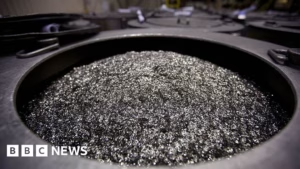Scientists believe they have found the strongest evidence yet of possible life beyond our solar system after detecting the chemical traces of gases in an alien planet’s atmosphere that, on Earth, are produced by living organisms. Using the James Webb Space Telescope, traces of two gases – dimethyl sulfide (DMS) and dimethyl disulfide (DMDS) – were found on an exoplanet known as K2-18b. K2-18b, which is located approximately 124 light-years away from Earth in the constellation Leo, is about 8.6 times more massive and 2.6 times larger in diameter than Earth. It orbits within the habitable zone, where liquid water, a critical component for life, could potentially exist. While researchers are careful to note that these findings don’t necessarily mean they have discovered living organisms, they do suggest the presence of a biological process. In 2021, the James Webb Space Telescope identified methane and carbon dioxide in K2-18b’s atmosphere, marking the first instance of carbon-based molecules being discovered in an exoplanet’s atmosphere within a star’s habitable zone. These discoveries are seen as a transformational moment in the pursuit of extraterrestrial life and represent advancements in observational astrobiology. However, other scientists emphasize the need for caution and thorough data analysis to confirm these findings.
Source: https://news.sky.com/story/strongest-evidence-of-life-yet-found-on-planet-beyond-solar-system-scientists-say-13350295







